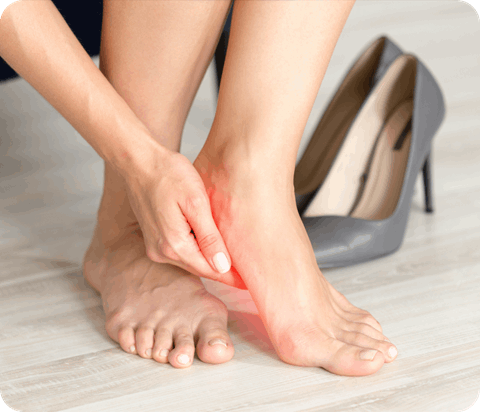Plantar fasciitis is a source of heel pain and can disrupt daily activities. This condition occurs when the plantar fascia, a thick band of tissue located along the bottom of your foot, becomes inflamed. The plantar fascia serves as a shock absorber and supports the arch of your foot, but repetitive strain or stress may damage it over time. Here are some non-surgical treatments for the condition:
Reviewing Therapy Options
Physical therapy often forms the cornerstone of plantar fasciitis treatment, and it focuses on targeted exercises and education about body mechanics. A trained physical therapist teaches you gentle stretches for the plantar fascia, Achilles tendon, and calf muscles. Stretching routines help increase flexibility, making it easier to move without pain. Therapists may also offer guidance on strengthening the smaller muscles of your foot and lower leg to support overall foot stability. They may introduce balance activities and gait training aimed at reducing excess stress on the heel during walking or running.
Physical therapists sometimes use hands-on techniques, such as massage, to reduce muscle tension and encourage circulation. Ultrasound therapy is another treatment method that uses sound waves to penetrate deep into the tissue, addressing areas of irritation. Developing a regular routine with these exercises is often recommended. For athletes or individuals with active lifestyles, therapists may also teach activity modifications to prevent recurrent strain.
Understanding Foot Stabilization Techniques
Foot stabilization offers another layer of support in managing plantar fasciitis symptoms. Night splints are designed to keep your foot in a dorsiflexed position while you sleep. Wearing these splints gently stretches the plantar fascia and Achilles tendon overnight, which may ease the intensity of morning pain. They often feature lightweight materials and adjustable straps for a secure and comfortable fit.
Orthotic inserts, available both in stores and through custom fitting, help distribute pressure more evenly across your foot. This helps lessen the impact on the inflamed area. Some people prefer rigid orthotics for maximum support, while others gravitate toward softer ones that offer added cushioning.
Taping techniques use adhesive athletic tape to create better arch support and decrease strain on the plantar fascia. Athletic trainers and therapists demonstrate how to apply the tape, but this method can also be learned for home use. Supportive footwear, like shoes with a strong arch, good heel support, and shock-absorbing soles, may help minimize symptoms during daily activities. Stabilizing and supporting the structure of your foot, both during the day and at night, helps reduce pain without invasive procedures.
Evaluating Available Medications
Medication use for plantar fasciitis typically focuses on symptom management. Nonsteroidal anti-inflammatory drugs (NSAIDs) such as ibuprofen or aspirin can be used to address both pain and inflammation. If over-the-counter medications provide only limited relief, healthcare providers may recommend alternative strategies. Topical medications, including creams containing diclofenac or similar agents, may offer targeted pain relief when applied directly to the heel.
Treat Plantar Fasciitis Today
Many people manage this condition successfully with a blend of therapies, stabilization, and careful medication use. Each technique is designed to address a different aspect of plantar fasciitis, from inflammation and pain to support and movement patterns. Taking time to learn about these non-surgical treatments helps you make informed choices about your care. If persistent discomfort is affecting your quality of life, contact a podiatrist today.



